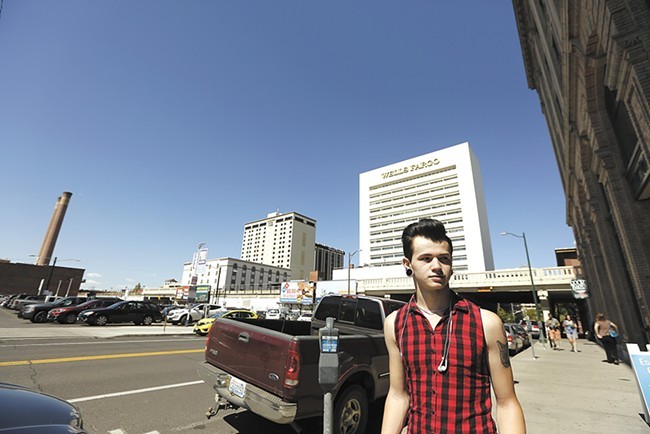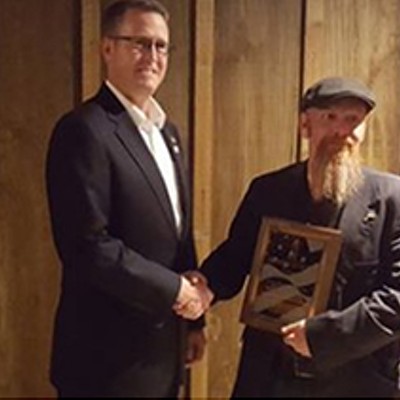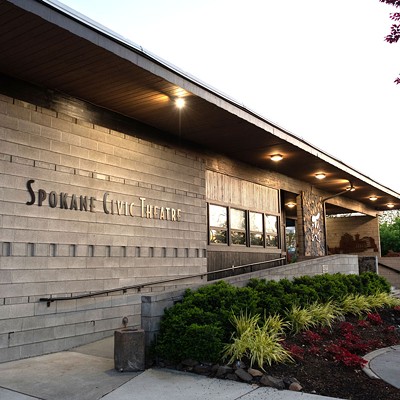Monday, September 12, 2016
Report: Spokane homeless students have the state's highest graduation rate

Young Kwak
Tristan Keck, 17, for years lived on the streets, at friends' houses, or at a homeless shelter until finding transitional housing
When kids worry about things like where their next meal will come from, or where they will sleep that night, school becomes less of a priority.
That, ultimately, leads to a lower graduation rate. Statewide, only about half of students considered homeless graduate in four years.
But in Spokane Public Schools, 75 percent of homeless students graduate on time, according to a report prepared this year for the Washington Office of Homeless Youth Prevention and Protection and A Way Home Washington. The report used data compiled by the state's Office of the Superintendent of Public Instruction, and was limited to school districts with a cohort of at least 55 homeless students.
That Spokane graduation rate is the highest in the state when compared against the largest school districts, according to the report. And it's a drastic turnaround compared to just five years ago, when just 70 percent of all students in Spokane Public Schools graduated in four years, according to the OSPI.
In Spokane Public Schools, there were 1,300 homeless students in 2013-14, according to the district. Schools count students who are "doubled-up" as homeless, meaning they live with someone else because their family lost housing but still have a roof over their head. It's a broader definition than what the U.S. Department Housing and Urban Development counts as a homeless person.
On our cover this week, we explored the eye-opening struggles facing kids who are forced to live on the street. One kid was forced to live in a teen shelter because his parents lost their house and they now stay in a motel without any room for him. Another boy left home after his parents found out he was gay. And one girl battling drug addiction says she found herself trapped, literally, in a homeless encampment as she tried to find a way out.
If a student has been swallowed by the streets, they may not be counted in school data. Sarah Miller, who helps connect homeless students in Spokane Public Schools to resources, describes those students as a missing group of kids.
"It's like a black hole they go into and they aren't seen anywhere," she says. "They're not seen and not counted and don't fit into anybody's current box that they're allowed to receive services with public dollars."
Still, the homeless students who are identified in Spokane Public Schools have seen improved success in school even in the last couple years. In June of 2014, the graduation rate for homeless students in Spokane was 60 percent. Since, it has shot up by 15 percent, Miller says.
Fred Schrumpf, who has spent the last several years as Spokane Public Schools director of on-time graduation, says much of the improvement can be attributed to extra resources to help homeless students. The district implemented an early warning system that tracks student grades and attendance and other behaviors to alert school officials when a student may be at risk of dropping out. He says that's been coupled with more training for teachers about supporting kids who may be going through trauma.
"When teachers know that and have had extra training and support kids, it makes a big difference," Schrumpf says.
If you ask Miller, the liaison for the district's HEART program for homeless students, it can be as simple as one more person dedicated to connecting with kids. Miller says the homeless student graduation rate saw a dramatic increase as soon as Spokane Public Schools added a community support specialist position in the HEART program that allowed for more relationship-building with high school kids. And it's a position, Millers says, that no other district in the state has.
Most school districts have a HEART program, through the federal McKinney-Vento Homeless Assistance Act, and that means they have a liaison who oversees the program, like Miller. But Miller says for years she begged for more help, and that finally resulted in the hiring of Danielle Duffey, who works "nose to the grindstone with kids," Miller says.
Duffey has worked in that position the last two years. She has focused on high school students at North Central and Shadle High School in the past, and this school year will be focusing on Lewis and Clark and North Central students. If students have poor attendance, Duffey's job is to figure out what's happening and develop a relationship with that student.
"Her position is what's clicking and working," Miller says.
These kinds of efforts will increase in Spokane Public Schools this year with a pilot project from Priority Spokane, an organization working to stabilize the lives of homeless families. Priority Spokane will work with three elementary schools and help house homeless families whose students attend those schools, and connect them with community health workers.
Miller says she continues to ask for more resources to support homeless students.
"If we want kids to succeed we need more than what is required," Miller says.
Tags: homelessness , homeless students , spokane public schools , graduation rate , News , Image


















